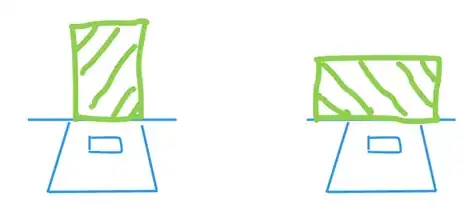As has been noted already, the question of performing a critical experiment to verify the hypothesis depends on the existence of a uniform gravitational field.
For practical purposes a uniform gravitational field does not exist, because (unlike electromagnetic fields for example) there is no known way to shield an object from undesirable gravitational effects.
Modern gravimeters can measure to an absolute accuracy of the order of $10^{-9}g$, (where $g$ is gravity at the surface of the earth) so to obtain a null result the gravitational field would have to be uniform to a greater relative precision than one part in $10^{-9}$ or $10^{-10}$.
That is roughly the same change in weight as would be caused by lifting a mass by $1$ mm relative to the surface of the earth.
If that seems unbelievably small, consider that gravimeters are routinely used in archaeology to find buried artefacts. There are also anecdotes where lab experiments using accurate gravimeters produced meaningless results because snow was falling and accumulating on the roof of the lab during the experiment.
For an experiment on earth, the changes in weight caused by tidal effects in the land (typically a few tens of millimeters of vertical movement) and in the changing positions of the sun and moon (which are of course the causes of tides) are all greater than one part in $10^{-9}$.
Attempting to correct for all these effects by calculation is a circular argument, because the theory assumes that the gravitational force (and hence weight) is independent of mass, which is what you are attempting to investigate.
Even if an experiment was attempted in deep space, the results would still be affected by the relative positions of the different parts of the experimental apparatus itself.
As a historical note, since Newton used his theory of universal gravitation to explain tides, he certainly "knew" about these effects in some sense of the word "know". I have no idea whether he wrote anything specifically on the topic you are asking about.
Indeed, every sea-captain in Newton's day also knew about these effects, having observed that pendulum clocks (which in fact measure gravity, given a stable independent time reference such as the rotation of the earth relative to the stars) run at different rates at different latitudes on earth.
It is fair to say that in Newton's day there were competing hypotheses as to why this occurred, one of which was that weight was affected by temperature, since the earth's climate also changes with latitude. The fact that there were no reliable thermometers, or temperature scales, made experiments on this difficult to reproduce, but attempts were made, and which demonstrated that temperature was not a significant factor.
As a later historical note, the first lab-scale experiment to measure the value of Newton's universal gravitational constant (made by Cavendish about 130 years after Newton published his theory) works precisely by using the difference in gravitational attraction between laboratory-sized objects (with mass a few kg) in different geometrical configurations.
There is no particular problem in repeating Cavendish's experiment using equipment in any high-school physics lab, though it requires a lot of patience and is likely to take a few weeks to get the apparatus working correctly, so it is unlikely to be part of a standard lab course! FWIW I did it myself when at high school.
